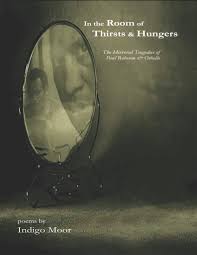
I opened up Indigo Moor’s latest and quite phenomenal poetry collection and I was gripped from the first poem – the first stanza, actually. To say that Moor has a gift for language is like saying Einstein had a gift for math. The collection buzzes with resonant imagery and one-liners that read like epitaphs.
In a three-page author’s note, Moor explains the fons et origo of the collection. He was enraptured by the life of Paul Robeson, as we all should be.
Robeson was a protean figure: world class athlete, actor/singer, civil rights activist, and a trained lawyer. He didn’t last long in the latter profession after a stenographer refused to take dictation “from a nigger,” but he soon became an international stage and screen star on both sides of the Atlantic. He had a god-like physique and enough charisma to overshadow the future heads of state he hung out with (Kenyatta, Nkrumah). In Moor’s words, “A rolling/Stone the size of Robeson gathers whatever the hell/It wants.”
After reading a biography of Robeson, Moor reflects, “Strangely, I felt I knew him from long ago.” He then recalls Robeson’s most famous theater role – Othello – and begins to study the parallel tragedies of Shakespeare’s character and the actor, who ended up dying in semi-obscurity following years of psychological problems. Has an author ever been more appropriately named for his work? A Moor writing about a Moor.
The first half of the book is entitled ACT I: 20th Century, The Robeson Reflections. In the first section, the poet completely nails Robeson’s grandeur and also captures the era: Langston Hughes, Joseph McCarthy, Ernest Hemingway, and the Roosevelts all make guest appearances. The second half of the book is called ACT II: 16th Century, The Othello Reflections. This involves observations on and by the main characters from Shakespeare’s play: Desdemona, Cassio, Bianca, Iago and of course Othello himself.
The poems are in heroic sonnet form (eighteen lines: four four-line stanzas followed by a couplet), with no rhyme and a rough iambic pentameter used throughout. By confining himself to this form, Moor reveals a technical mastery to match his linguistic mastery – a fusion of Shakespearean invention and modern vernacular. It’s a rich brew and it leaves you dazzled.

